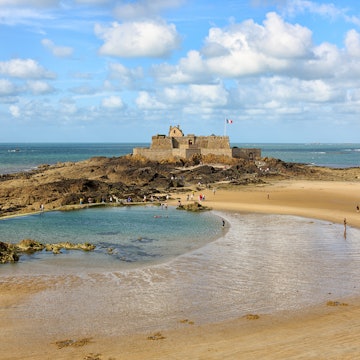
Overview
Brittany is for explorers. Its wild, dramatic coastline, medieval towns and thick forests make an excursion here well worth the detour off the beaten track. This is a land of prehistoric mysticism, proud tradition and culinary wealth, where fiercely independent locals celebrate Breton culture, and Paris feels a long way away indeed.
Leave the planning to a local expert
Experience the real Brittany. Let a local expert handle the planning for you.
Must-see attractions
Planning Tools
Expert guidance to help you plan your trip
Best Things to Do
You'll find stone-walled creperies, traditional dancing festivals and fisherman singing centuries-old sea shanties in the charming town of Brittany.
Read full article
Get a book. Get inspired. Get exploring.
in partnership with getyourguide













